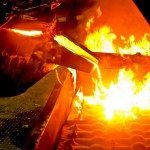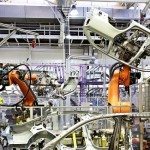As highlighted by FasterCapital in their article “Conveyor Belts And Assembly Line And Automotive Industry,” conveyor belts and assembly lines are indispensable in modern manufacturing, playing a pivotal role in streamlining industrial processes.
Conveyor belts are mechanical systems that consist of a continuous loop of material, such as rubber, metal, or fabric, designed to move objects from one location to another within a manufacturing setup. The choice of materials is crucial, based on specific application requirements like durability, flexibility, and resistance to wear and tear. These belts operate on a straightforward principle: a motor powers a series of pulleys that rotate the belt, moving items along a predetermined path, whether horizontal, inclined, or declined, depending on the production line’s needs.
In the automotive industry, conveyor belts are integral to the efficient movement of car parts and assemblies through various production stages. Components like engines, wheels, and body panels are transported seamlessly from storage areas to workstations, where they are assembled into final products. This continuous movement reduces manual handling, minimizes bottlenecks, and ensures a steady flow of materials, which is crucial for maintaining high production rates.
On the other hand, assembly lines are systematic arrangements of workers, equipment, and machinery in a sequential order to efficiently assemble products. They are designed to break down the manufacturing process into repetitive tasks, each performed at a specific workstation by specialized workers or automated machines. The primary goal of an assembly line is to streamline production, ensuring that each part of the process is as efficient and quick as possible.
To learn more about May Conveyor’s capabilities or products, click here.
Article with all rights reserved, courtesy of fastercapital.com








